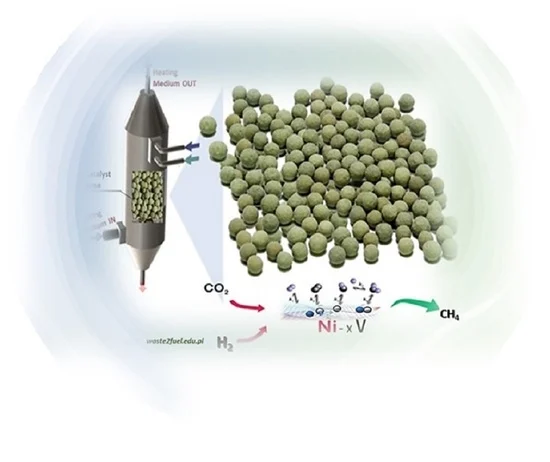CO2 hydrogenation to methane over ni-catalysts: The effect of support and vanadia promoting
Izabela S. Pieta, Agnieszka Lewalska-Graczyk, Pawel Kowalik, Katarzyna Antoniak-Jurak , Mikolaj Krysa, Anna Sroka-Bartnicka, Arkadiusz Gajek, Wojciech Lisowski, Dusan Mrdenovic ,Piotr Pieta , Robert Nowakowski , Agata Lew and Ewa M. Serwicka
Catalysts 2021, 11(4), 433
Abstract
 Within the Waste2Fuel project, innovative, high-performance, and cost-effective fuel production methods are developed to target the “closed carbon cycle”. The catalysts supported on different metal oxides were characterized by XRD, XPS, Raman, UV-Vis, temperature-programmed techniques; then, they were tested in CO2 hydrogenation at 1 bar. Moreover, the V2O5 promotion was studied for Ni/Al2O3 catalyst. The precisely designed hydrotalcite-derived catalyst and vanadia-promoted Ni-catalysts deliver exceptional conversions for the studied processes, presenting high durability and selectivity, outperforming the best-known catalysts. The equilibrium conversion was reached at temperatures around 623 K, with the primary product of reaction CH4 (>97% CH4 yield). Although the Ni loading in hydrotalcite-derived NiWP is lower by more than 40%, compared to reference NiR catalyst and available commercial samples, the activity increases for this sample, reaching almost equilibrium values (GHSV = 1.2 × 104 h–1, 1 atm, and 293 K).
Within the Waste2Fuel project, innovative, high-performance, and cost-effective fuel production methods are developed to target the “closed carbon cycle”. The catalysts supported on different metal oxides were characterized by XRD, XPS, Raman, UV-Vis, temperature-programmed techniques; then, they were tested in CO2 hydrogenation at 1 bar. Moreover, the V2O5 promotion was studied for Ni/Al2O3 catalyst. The precisely designed hydrotalcite-derived catalyst and vanadia-promoted Ni-catalysts deliver exceptional conversions for the studied processes, presenting high durability and selectivity, outperforming the best-known catalysts. The equilibrium conversion was reached at temperatures around 623 K, with the primary product of reaction CH4 (>97% CH4 yield). Although the Ni loading in hydrotalcite-derived NiWP is lower by more than 40%, compared to reference NiR catalyst and available commercial samples, the activity increases for this sample, reaching almost equilibrium values (GHSV = 1.2 × 104 h–1, 1 atm, and 293 K).



